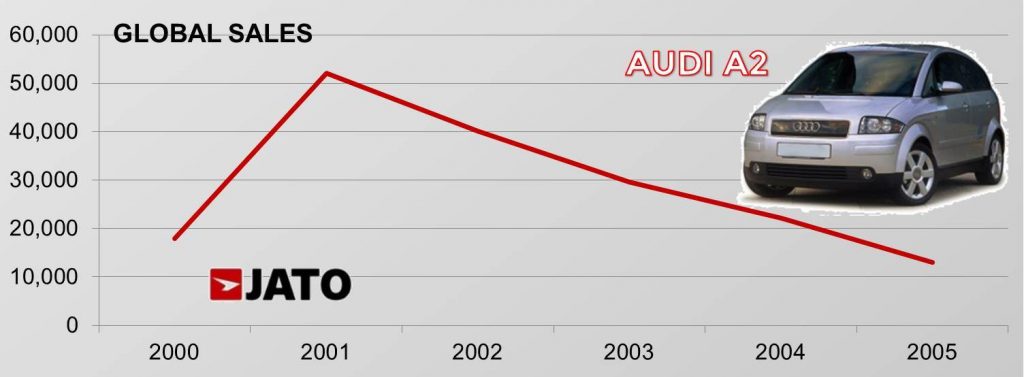The cars that time forgot – Part 1
The global car industry is always being reinvented with new cars featuring the latest technology, powertrains and mobility specifications. Every week there is an all-new car revealed, a facelift introduced or a concept presented. It is just an example of how fast the industry responds to consumers worldwide. The competition is tough, and the time when a nameplate remained with us for more than 20 years is gone.
However, more new cars in the market does not necessarily translate into more clients. Many car makers fail to grab the attention of potential clients as their new products don’t meet their needs. As competition gets tougher every day and legislation regarding safety, emissions, transportation and taxes becomes more challenging, it is likely that we will see more cars with short commercial life cycles. In other cases, the introduction to the commercial phase – when a new car is supposed to post significant growth (usually during the second full year in the market) – is extremely short, or is followed by large declines. The following list (part 1) shows some of them.
The Fiat Croma was conceived to give Fiat a presence in the popular SW segment in Italy. The car featured some of the Fiat Punto’s shapes and with its restyling it even looked more similar to the Fiat Bravo. Despite its practicality and the comfort inside, the Croma did not meet Fiat’s target and wasn’t replaced by any model. Since its death, the Fiat brand is officialy out of the D-Segment. 
The successor of the Fiat Stilo 5-door. The Bravo was launched at a time when Fiat was facing very good times. Its goal was to make things difficult to the VW Golf especially in Italy. But the Bravo wasn’t popular not even in its home market. Its introduction in the Brazilian market just confirmed how unpopular this car was.
The FF was the closest to the idea of a Ferrari hatchback. It also featured All-Wheel-Drive and 4 seats. The car didn’t look like a real Ferrari, especially in the back. The low numbers forced Ferrari to reposition this car by launching a deep restyling and changing its name to GTC4.
It is maybe one of the most popular flops in the recent years. Fiat Chrysler had big expectations, when the Dodge Dart was revealed in Detroit motor show 2012. But problems with automatic gearbox availability, the cannibalization with the bigger Dodge Avenger and the SUV boom, didn’t allow the Dart to occupy a decent place in the American compact segment. No successor is expected.
The C-Crosser was Citroen’s first attempt to offer a decent SUV. It was made using Mitsubishi’s knowhow and therefore it was supposed to be a serious contender to the existing Asian and European midsize SUVs. However, the C-Crosser didn’t feature a real French identity and it arrived at a time when premium midsize SUV started to gain ground.
As its cousin the Dodge Dart, the second generation of the Chrysler 200 has a very short life, despite the big investment and the noice created by FCA when it was launched. This car is one of the most visible victims of the boom of SUVs in USA. The Chrysler 200 was not a SUV and it wasn’t appealing enough to attract clients from its popular competitors. There won’t be any successor. 
It was Audi’s first MPV and its response to the first generation Mercedes A-Class. With a very futuristic design, the A2 was ahead of its time even if it was available when MPVs were boosting European car sales. It never had a successor.
Following the success of the Alfa 156, the Italian brand introduced the 159 in 2005 in order to maintain its presence in the most popular premium segment, the midsize sedan/SW. It was one of the first cars developed under the GM-Fiat merger and therefore it was forced to use some components from GM big sedans which made of the 159 a heavy car.








